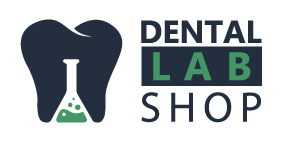In recent years, 3D printing technology has emerged as a groundbreaking force, particularly within the dental sector, marking it as a critical area of advancement. This cutting-edge innovation has revolutionized industries and significantly transformed the work landscape for dental lab technicians.
By integrating 3D printing, dental labs worldwide are entering a new era characterized by heightened precision, efficiency, and the ability to customize like never before. Adopting this technology, including RPM Services, is reshaping the creation of dental appliances and models, thus offering unparalleled opportunities and posing new challenges.
This article explores the profound impact of 3D printing technology on dental lab technicians, shedding light on the transformative changes it brings to their work.
Enhanced Precision and Quality
3D printing, or additive manufacturing, builds objects layer by layer from digital models. For dental lab technicians, this means the ability to produce dental restorations and appliances with unmatched precision.
Unlike traditional methods, which can be prone to human error, 3D printing ensures that each item is produced precisely according to the digital design. This precision leads to a higher quality of dental products, including crowns, bridges, and dentures, resulting in better fit, function, and aesthetics for patients.
Increased Efficiency and Productivity
One of the most transformative effects of 3D printing technology on dental lab technicians’ roles is the substantial enhancement in efficiency and productivity, revolutionizing traditional practices:
●Streamlined Processes: Traditional methods involve labor-intensive, multi-step procedures that can extend production timelines. In contrast, 3D printing simplifies these processes, enabling the creation of dental products in a single step, directly from digital designs. This streamlined approach drastically reduces the time from design to production.
●Simultaneous Production: Unlike conventional techniques that often require sequential fabrication, 3D printing allows the concurrent manufacturing of multiple dental appliances or models. This capability significantly accelerates production times.
●Increased Volume Handling: The efficiency of 3D printing permits dental lab technicians to manage a higher volume of orders effectively. This game-changer for labs boosts their overall throughput and allows them to serve more dentists and patients within the same timeframe.
●Reduced Manual Labor: The automation aspect of 3D printing minimizes the need for manual intervention in the fabrication process, thereby reducing the potential for human error and ensuring consistent quality across all products.
These advancements underscore how 3D printing is reshaping the dental lab industry, making it more efficient and capable of meeting the growing demand for customized dental solutions.
Customization at Its Best
The advent of 3D printing in dental labs has taken customization to the next level. Dental lab technicians can now easily create personalized dental products tailored to each patient’s needs and anatomy. This is particularly beneficial for complex cases where traditional methods struggle to provide a perfect fit.
With 3D printing, technicians can adjust and fine-tune digital designs before printing, ensuring that the final product meets the exact requirements of both dentists and patients.
Cost-Effectiveness
While the initial investment in 3D printing technology can be significant, the long-term cost savings are substantial. The efficiency and speed of 3D printing reduce labor costs and material waste.
Moreover, the durability and quality of 3D-printed dental products mean fewer remakes and adjustments, saving both time and resources. These savings can be passed on to patients, making dental care more affordable and accessible.
Expanding Material Options
3D printing technology is constantly evolving, and so are the materials used in the process. Dental lab technicians now have access to a broader range of materials, including various resins and metals suitable for dental use.
These materials can be selected based on their properties, such as strength, flexibility, and color, to suit different dental applications. This flexibility allows technicians to experiment and innovate, leading to the development of new dental products and treatments.
The Need for New Skills and Training
Integrating 3D printing into dental labs also brings challenges, particularly the need for new skills and training. Dental lab technicians must become proficient in digital design and 3D printing technology to leverage their potential fully. This requires ongoing education and practice and a willingness to adapt to the rapidly changing landscape of dental technology.
Labs must invest in training their staff, ensuring they are equipped with the knowledge and skills to operate advanced 3D printing equipment effectively.
Conclusion
3D printing is transforming the work of dental lab technicians, driving advancements in precision, efficiency, and customization. As this technology continues to evolve, its impact on the dental industry will only grow, offering new possibilities for dental care and treatment.
However, to fully realize these benefits, dental labs must embrace the changes, investing in technology and training to stay at the forefront of this digital revolution. The future of dental lab technology is bright, with 3D printing at its core, promising a new era of innovation and excellence in dental care.

